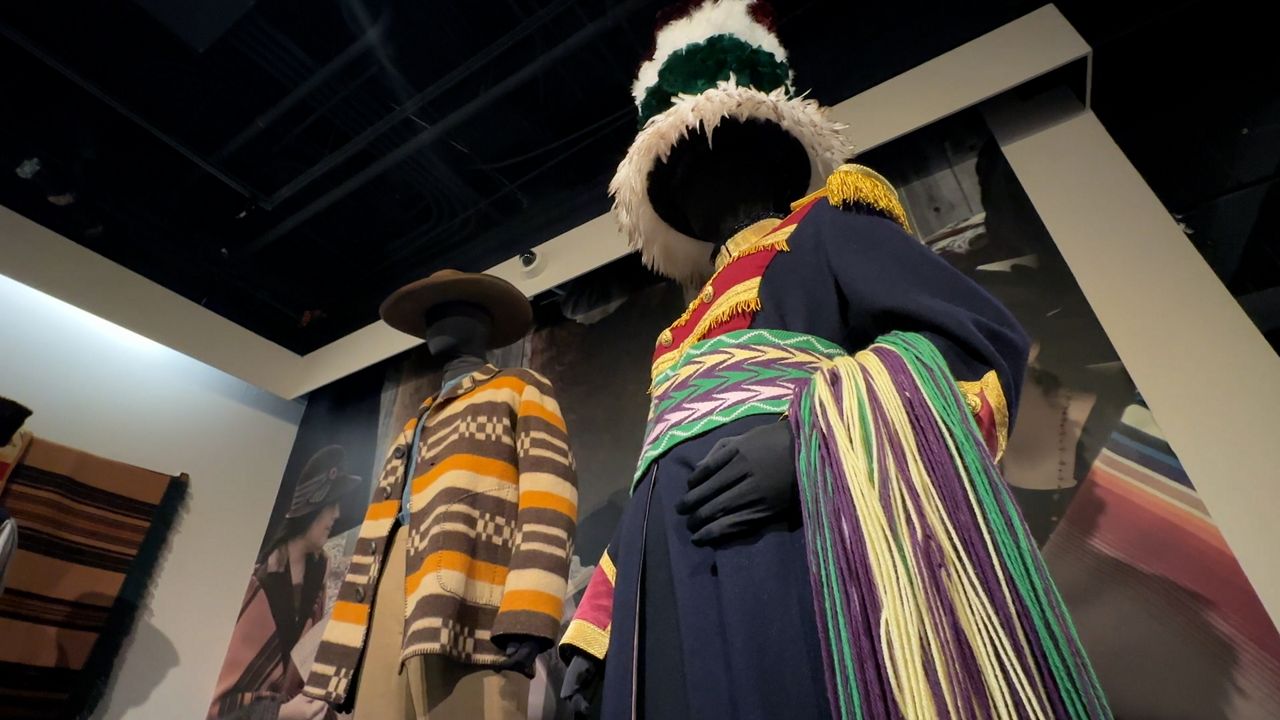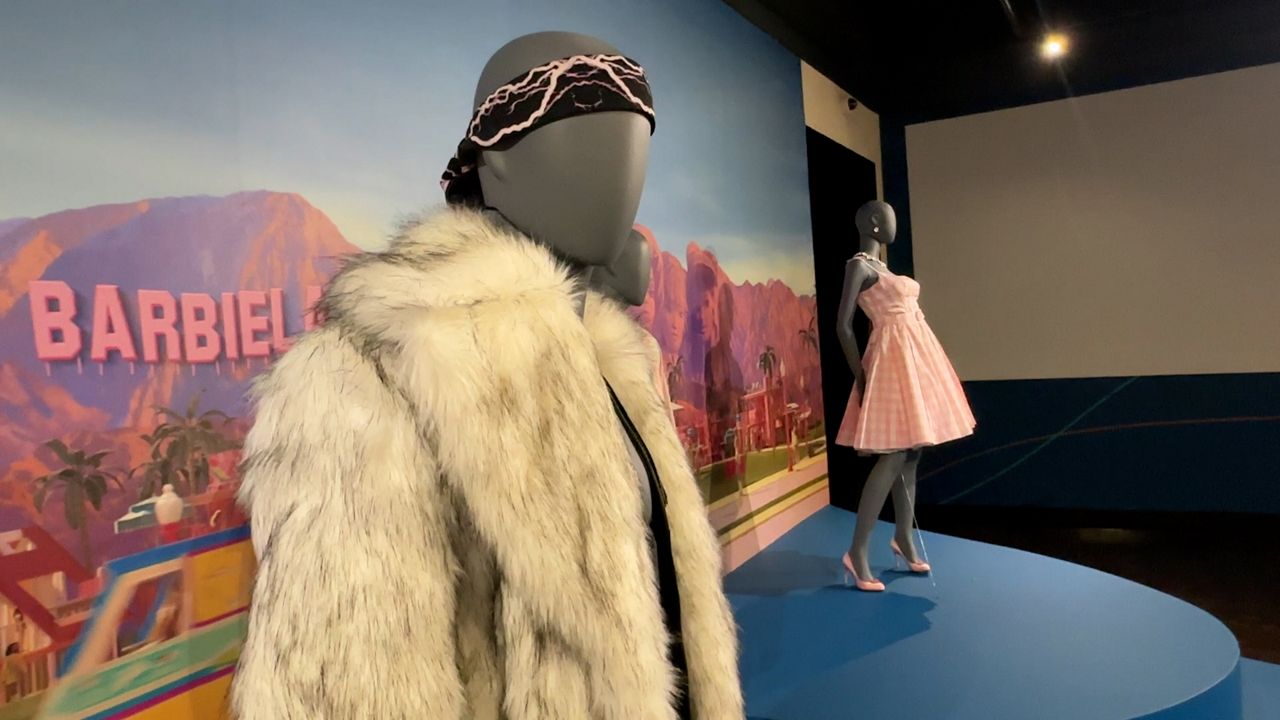LOS ANGELES — The pink, the puffy — and one very prominent hat. You can find them all, plus other eye-catching ensembles, at the ASU FIDM Museum. The downtown Los Angeles space always draws an eager crowd when they present their annual Art of Costume Design in Film exhibition.
Curatorial specialist Christina Frank understands the appeal. We all get dressed every day, she says, so fashionistas or not, clothes are a central part of our lives.
It’s hard not to notice Frank’s own look as she strolls room to room in a white blouse with exaggerated sleeves.
“I love big sleeves,” she said.
She admits she’s very glad the nominated film “Poor Things” has made them fashionable, and she’s spent a lot of time poring over Holly Waddington’s work. The exhibit gives a very complete overview of Waddington’s work, from some of her original sketches to the careful construction of Bella’s unmistakable sleeves. There is a whimsy and a timelessness to the designs that Frank says tells us a lot about the character.
“It gets that spirit of Bella Baxter that she just doesn’t follow the rules,” she said. “[Waddington] really approached it in this… open artistic way. It’s not a period film. It’s not quite a sci-fi film. It’s not quite a fantasy film. So it really allowed her to take a very creative approach.”
Far subtler than Bella’s sleeves but no less important to character development is Oppenheimer’s hat. This one is a period film but Oscar nominee Ellen Mirojnick departed a bit from the strict realism of the time, making the title character one of the few men to wear one.
“In talking with the director, Christopher Nolan, they really thought of it as a portrait of a man, not a biopic,” Frank said. “By eliminating the hats on the other people, it really kind of gives more to the character.”
There’s so much historical research that goes into each of the nominated films. “Barbie” costume designer Jacqueline Durran studied 60 years of archival materials from Mattel. For “Napoleon”, Janty Yates and David Crossman dove into portraits to get every aspect right, from the soldiers’ uniforms to the coronation cape.
“They really have their details,” Frank marveled. “All this rich embroidery was done by artisans in Pakistan. There’s not a lot of people that still know how to do this level of embroidery. And the fact that it’s done for a film…it’s pretty mind blowing.”
For “Killers of the Flower Moon,” Oscar nominated costume designer Jacqueline West worked with Osage costume consultant Julie O’Keefe to capture the careful folding of the blankets worn by the Osage woman. Frank says O’Keefe also helped the museum accurately display the technique that she refers to as Osage Origami.

In addition to the Oscar nominees, there are costumes from other 2023 releases on display — musicals like “The Color Purple” and “Wonka,” sports-themed films such as “Air” and “The Iron Claw,” some killer threads from “Saltburn” and a pair of outfits from “Maestro.” The latter is the work of Oscar winner Mark Bridges, who won in 2018 for “Phantom Thread,” a film about fashion. He loves the annual FIDM exhibit, he says, because it gives people a chance to really appreciate the details of the designs that they may not get to linger on on-screen.
“It’s exciting to see the clothes up close,” he said. “Sometimes, things are only shot from like the chest up, but then you get to take in the entire beautiful costume and see details that you never saw before.”

Bridges sees costume design as creating the “outer shell for the inner work an actor will do.” And while it’s not always the focal point of the story, there are times when the fashion in a film pop off the screen and into the real world.
“You know, there’s been quite a bit of talk of, like, Barbie-core this year with a lot of hot pink,” he said. “But it goes back to the Elizabeth Taylor’s dress that she wore in “A Place in the Sun,” designed by Edith Head, which became a sensation and a popular prom dress in 1951 for many girls.”
Wearing her “Poor Things” inspired sleeves, Frank, of course, is tickled pink by all the items in this year’s exhibition. But what designer does she think will get to go home with the gold on Sunday?
“I am just thrilled to have all of the Oscar-nominated costumes here, and I will let the academy do their job,” she said. “And I can’t wait to find out who wins.”



